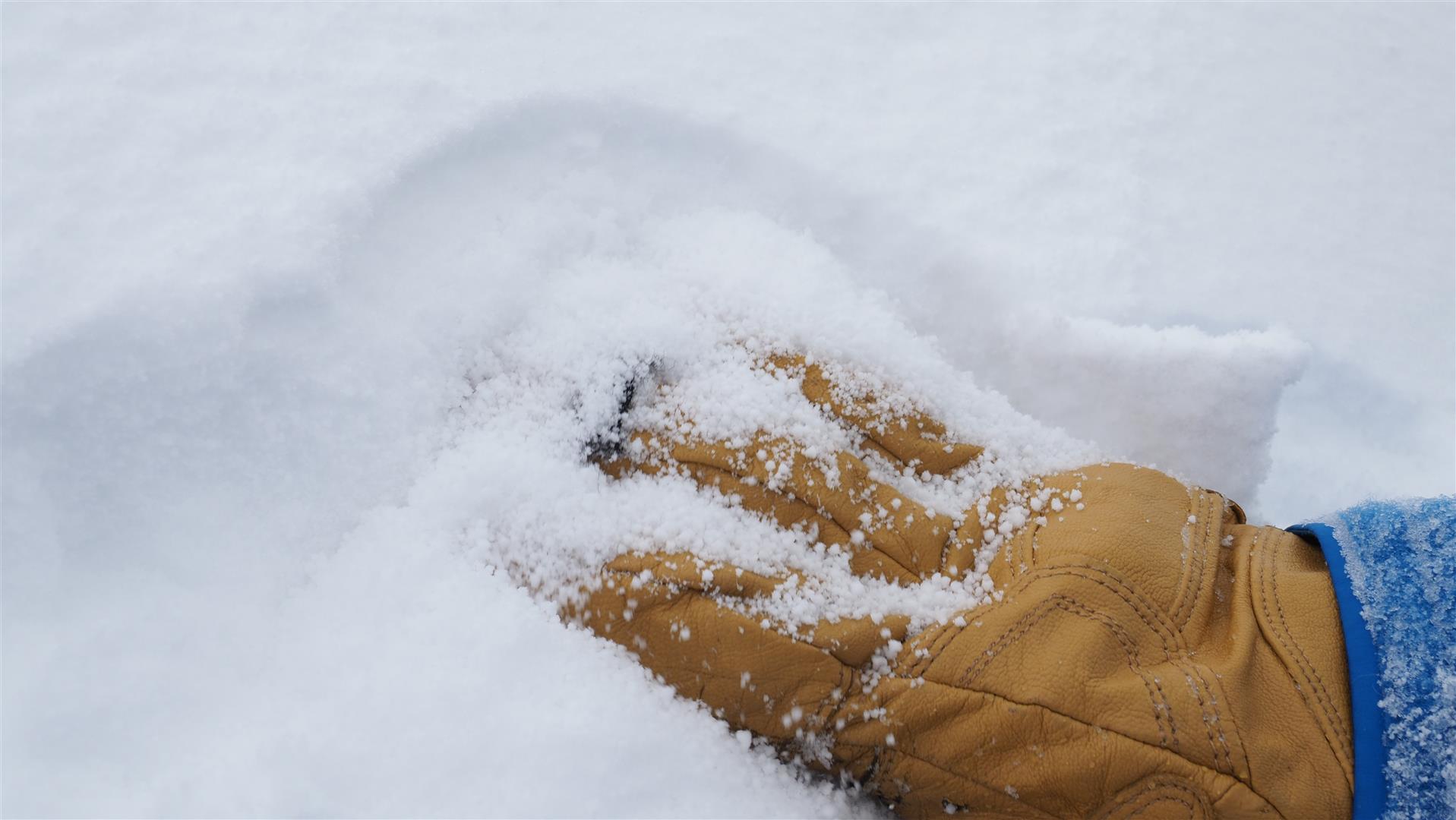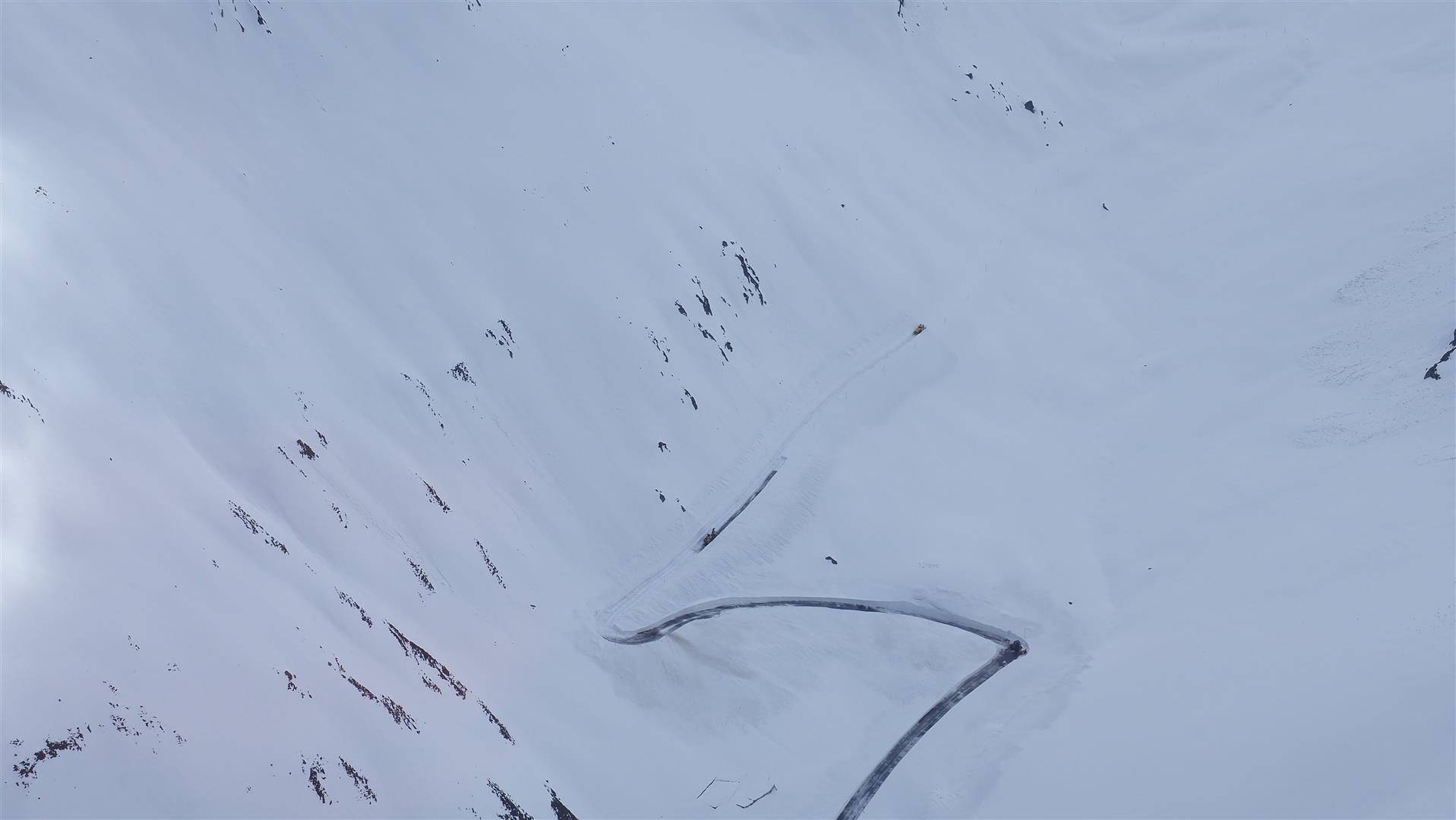Last week was marked by variable April weather conditions, avalanche danger considerable regionally at the start then moderate then low. Wet-snow and snowdrifts were the prevalent problems. Two avalanche incidents involving persons occurred: on 20.04 two persons below the Liebenerspitze in the Gurgler Massif were caught in a slab avalanche. On 19.04 the snow melted on a slope near the Arzler Scharte, revealing a person who was buried in snow presumably on 30.01. The avalanche situation is not expected to change significantly. Major focus should be on the thoroughly wet snowpack at high altitudes.
In high-alpine regions on Main Alpine Ridge, still wintery conditions. Elsewhere, springtime has arrived.
As already referred to in the last Blog , precipitation from 16-17 April on the Main Alpine Ridge brought measurable amounts of fresh snow. For that reason, the wintery character persists there, whereas at low and intermediate altitudes the spring has already started its march forward. Due to high precipitation intensity and massive wind impact, large-to-very-large slab avalanches triggered in high-alpine terrain at that time. The primary fracture occurred in near-surface layers in the fresh snowfall mass. The large additional loading of these slab avalanches led to fracture of a near-ground level weak layer which formed in early winter and was, particularly in glaciated terrain, evident over widespread areas.
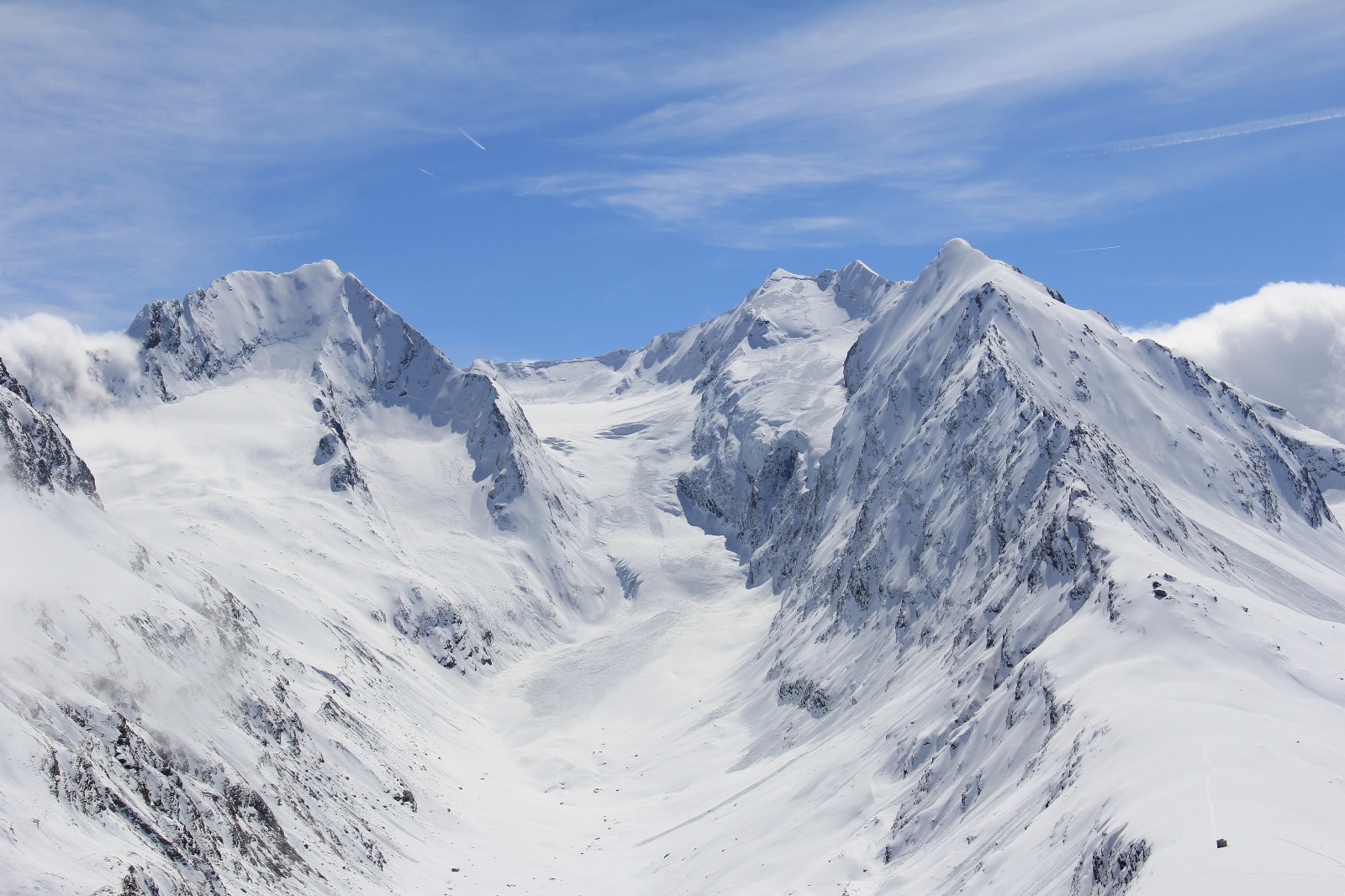
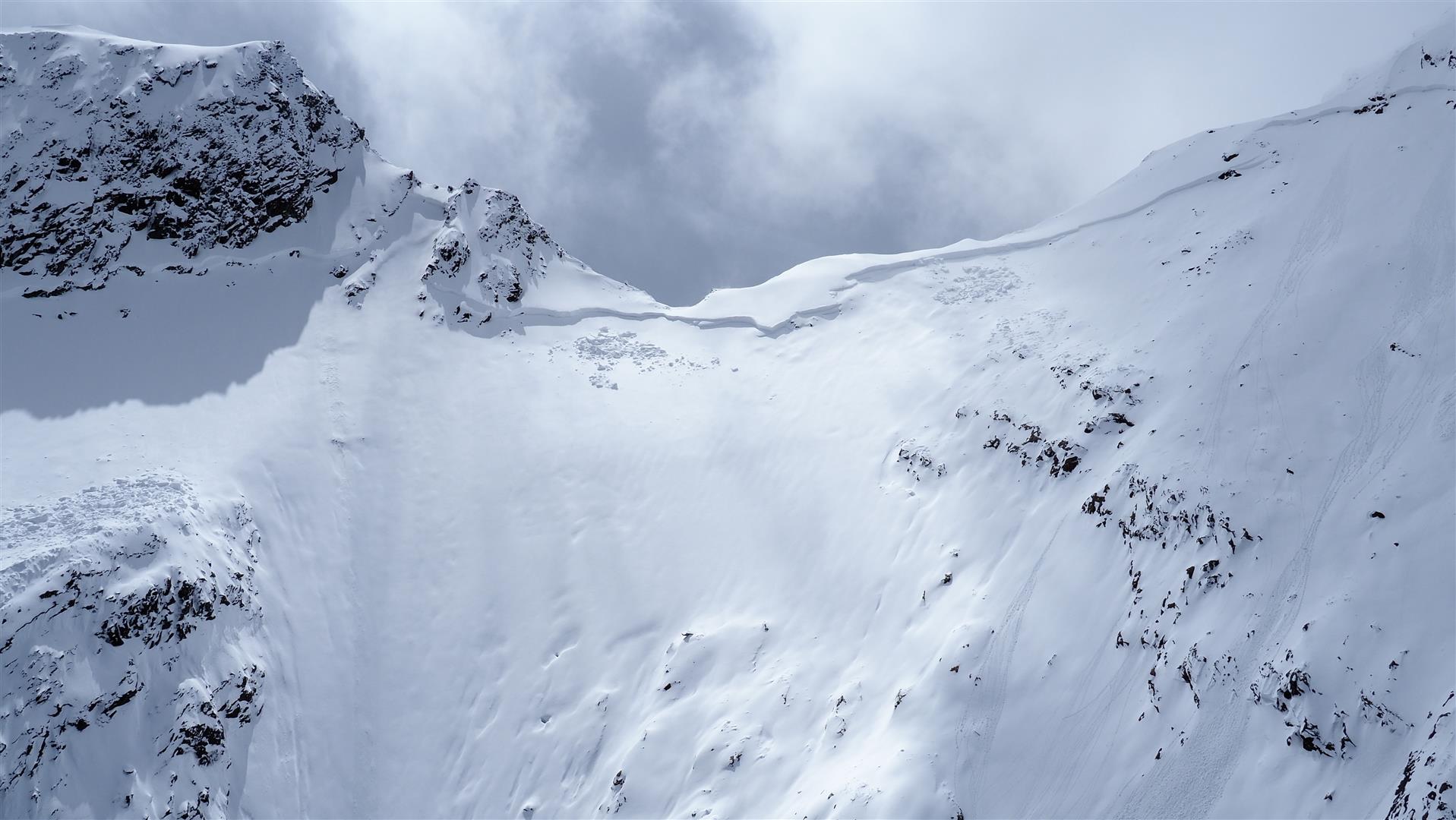
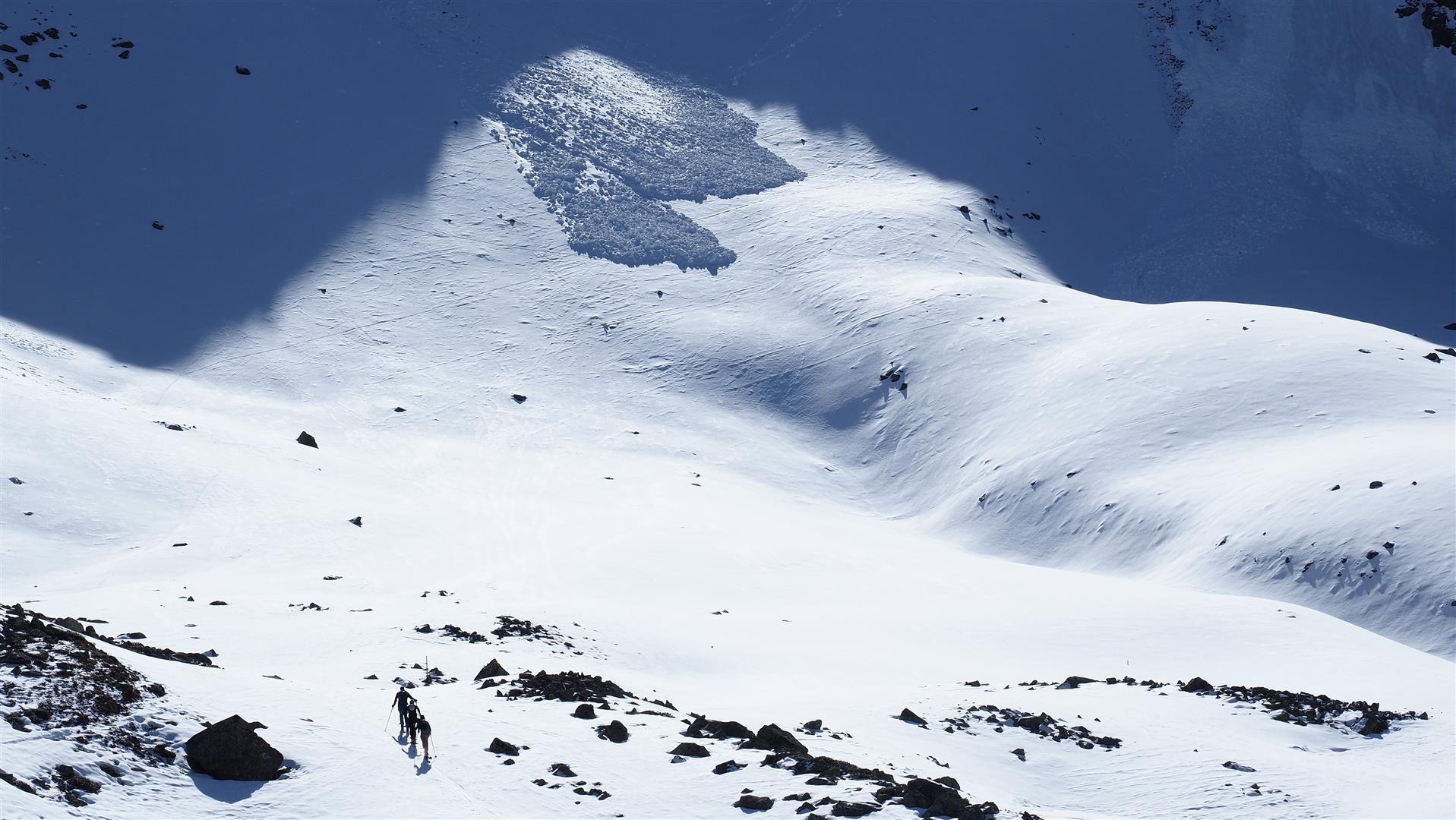
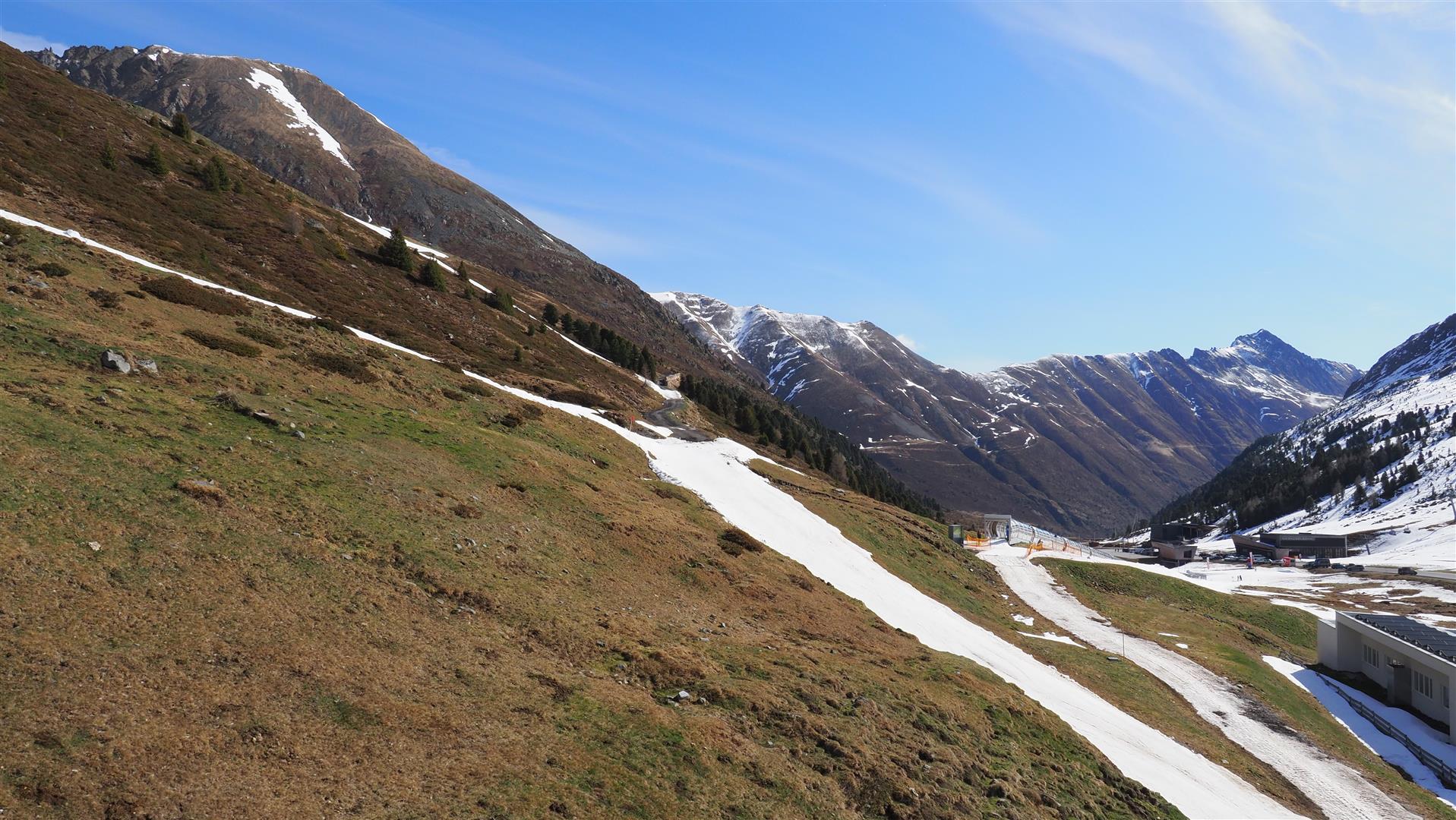
In case of southern barrier cloud regions, there is invariably a large portion of precipitation which falls immediately onto the Main Alpine Ridge. This was also the case on 16-17 April, most conspiculously in the Gurgler Massif. Easy to recognize in the two following weather station graphs from Obergurgl and Timmelsjoch.
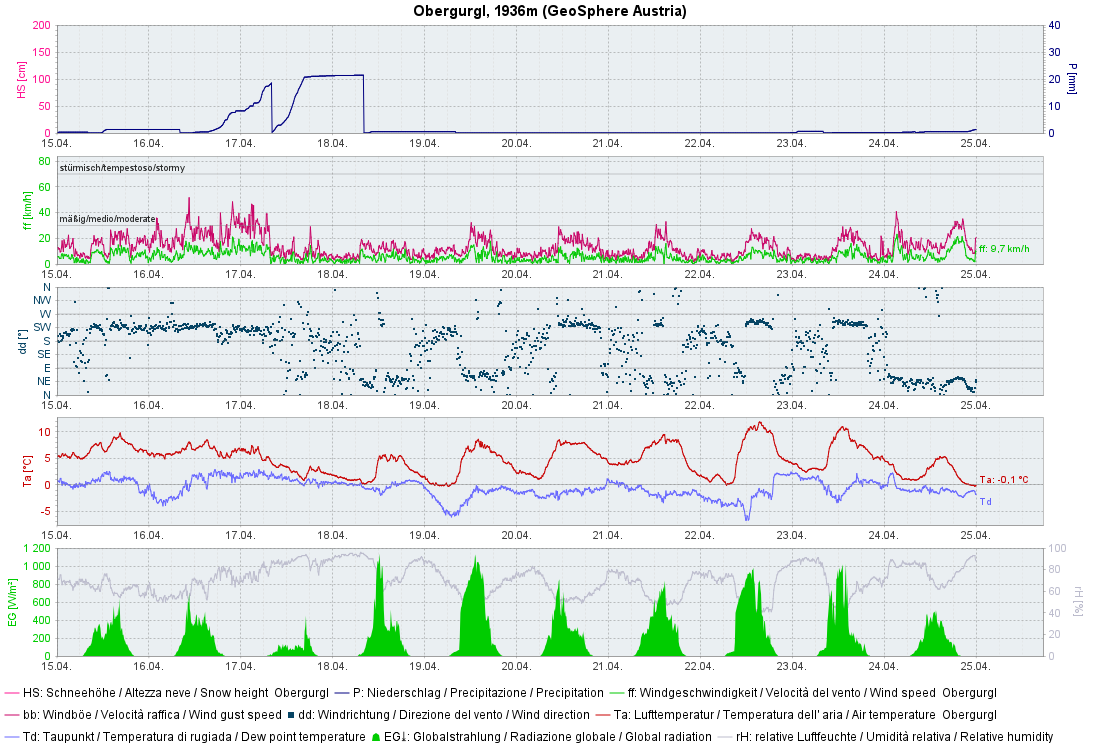


Avalanche incident Liebenerspitze
On 20.04 below the Liebenerspitze in the Gurgler Massif at about 3300m on an extremely steep west-facing slope, a slab avalanche triggered when two persons were in their ascent (using crampons). The avalanche caught two persons and swept them over rocky terrain. They were not buried or only partially buried. One person was severely injured, the other escaped with only minor injuries. Together with the Alpine Police, we carried out an investigation of the incident on the spot. What was revealed: a weak layer inside the mass of fresh fallen snow (deposited with accompanying wind-impact starting on 16.04) triggered the slab avalanche.
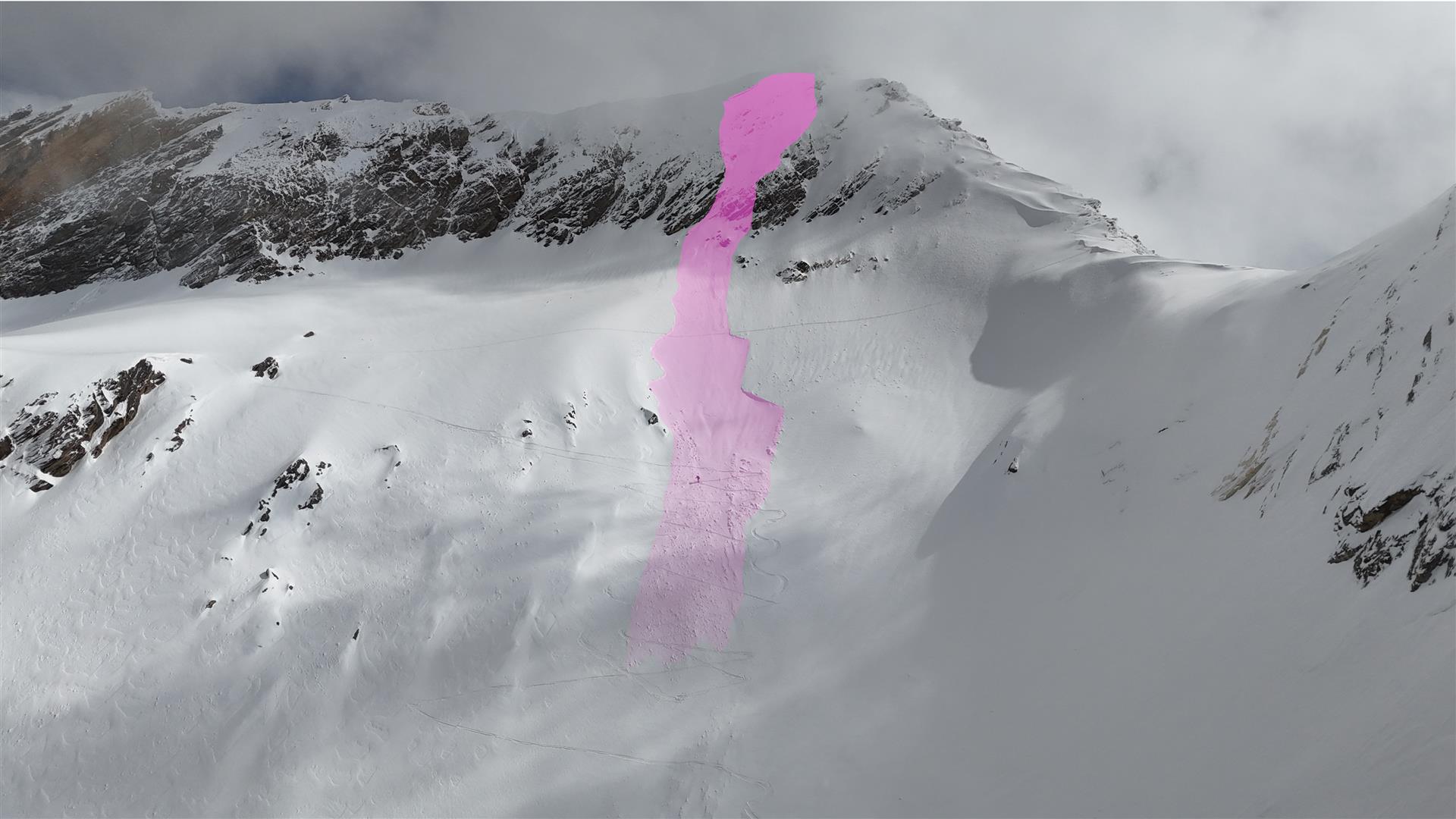
A snow profile near the avalanche incident was taken. Significant for the avalanche release were the recently-formed weak layers consisting of decomposed snow crystals inside the mass of fresh fallen snow.
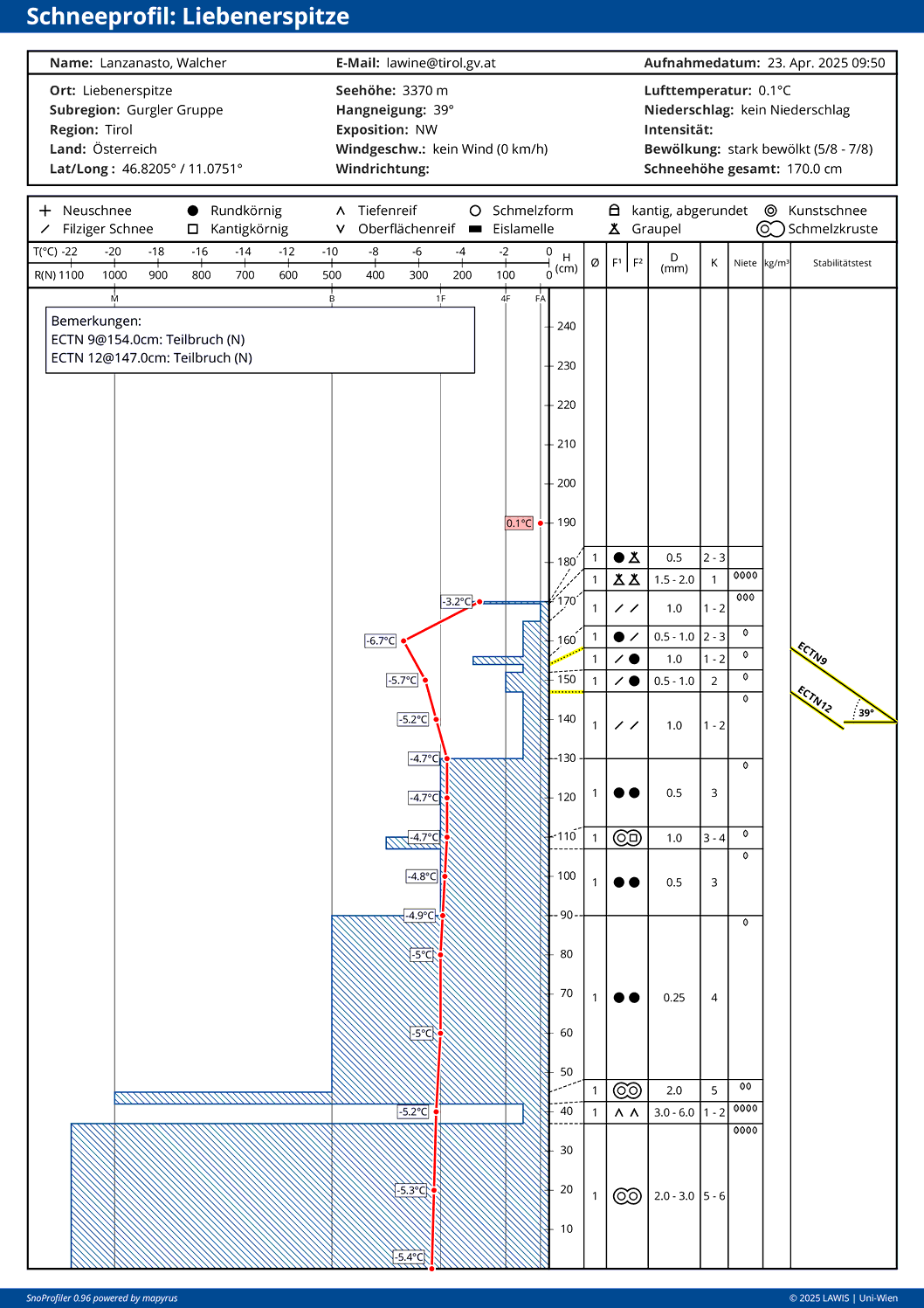
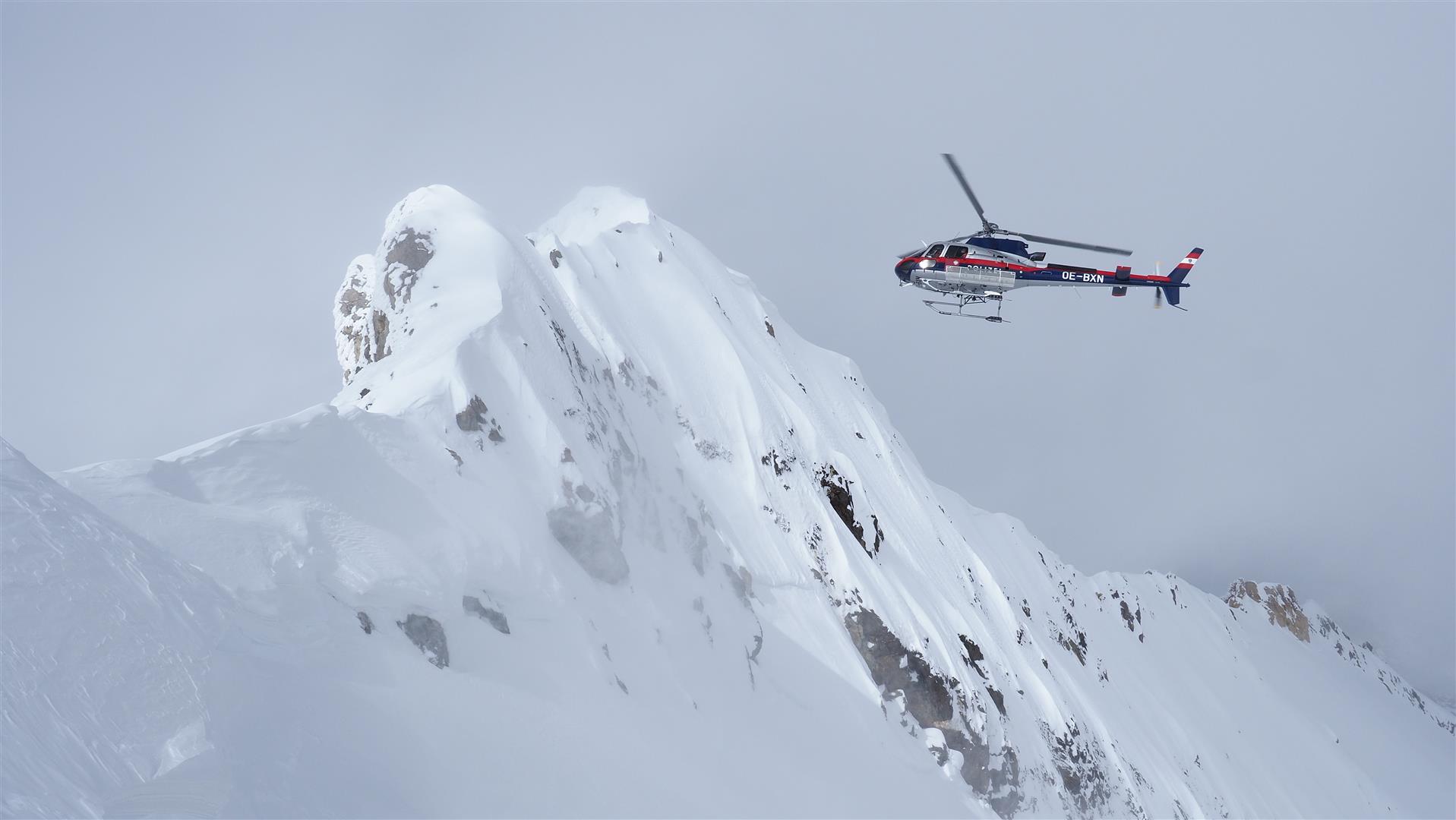
Avalanche incident Arzlerscharte
On 19 April a report came into Tirol headquarters that an avalanche release had occurred below the Arzlerscharte in the Karwendel. Hikers found a body segment on the bare slope where the snow had recently melted. It was a person who had been missing since the end of January. This person was totally buried by a slab which had triggered on a very steep west-facing slope. Once this uncovery become known, a photo from 02.02 was published on which the avalanche incident, coincidentally, was depicted. Our researches led to the ultimate revelation: the avalanche released during a period of high avalanche activity, in all probability on 30 January 2025.
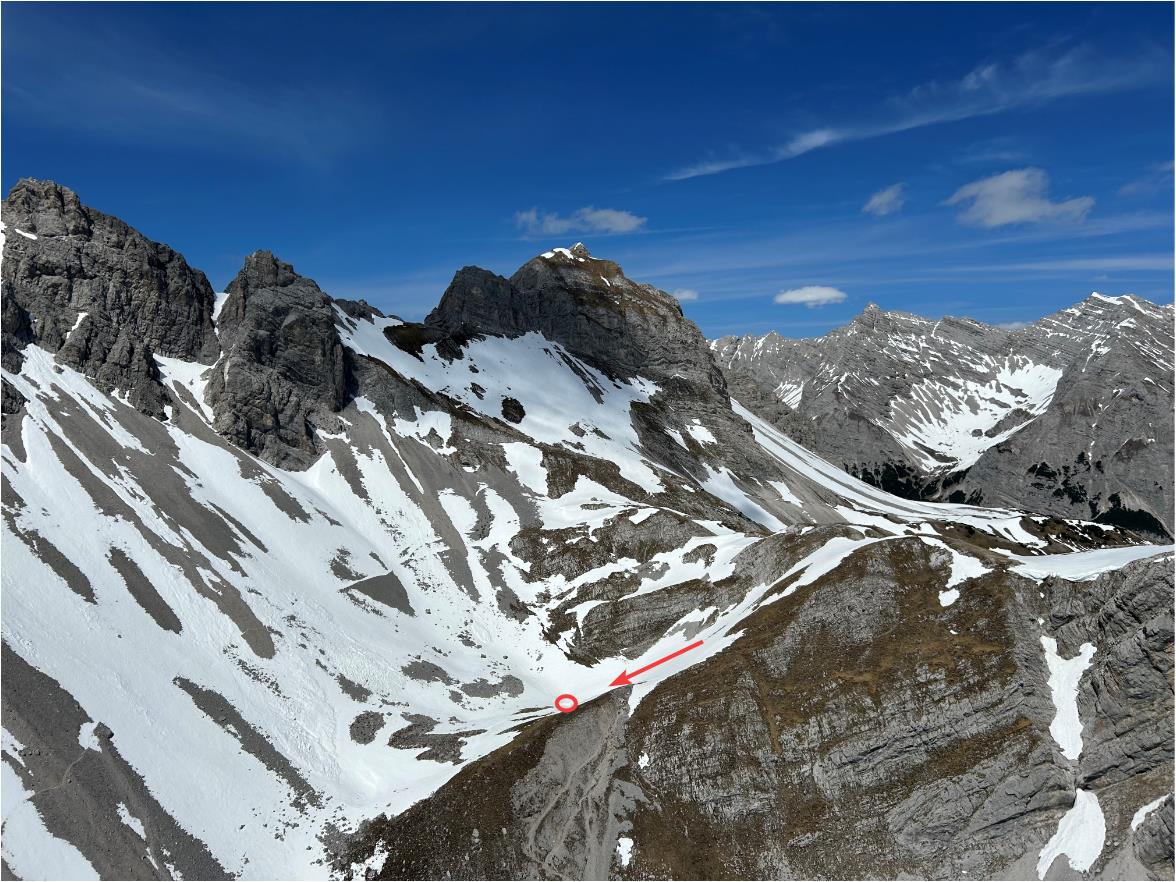
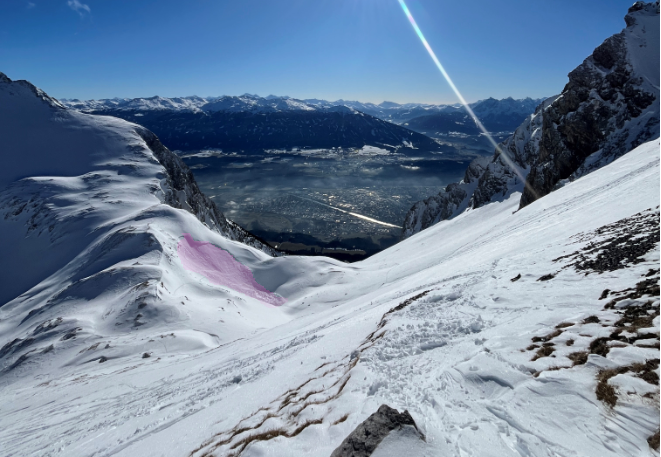
April weather will continue, but it’s getting warmer.
Following a cold front which brought a small amount of fresh fallen snow up to 2000m in Tirol, temperatures will now continue their upward march. Weather conditions will remain, to start with, rather variable.
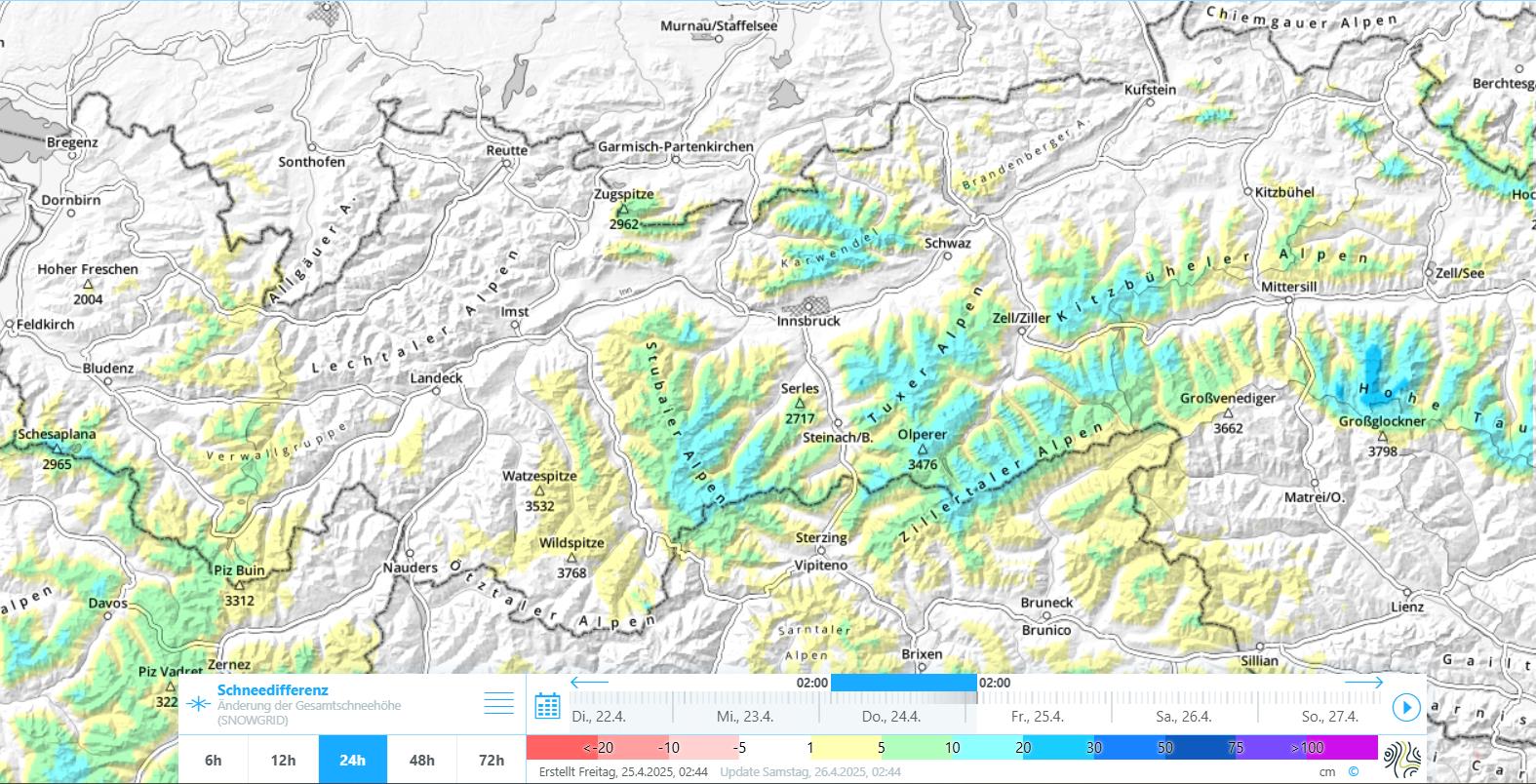
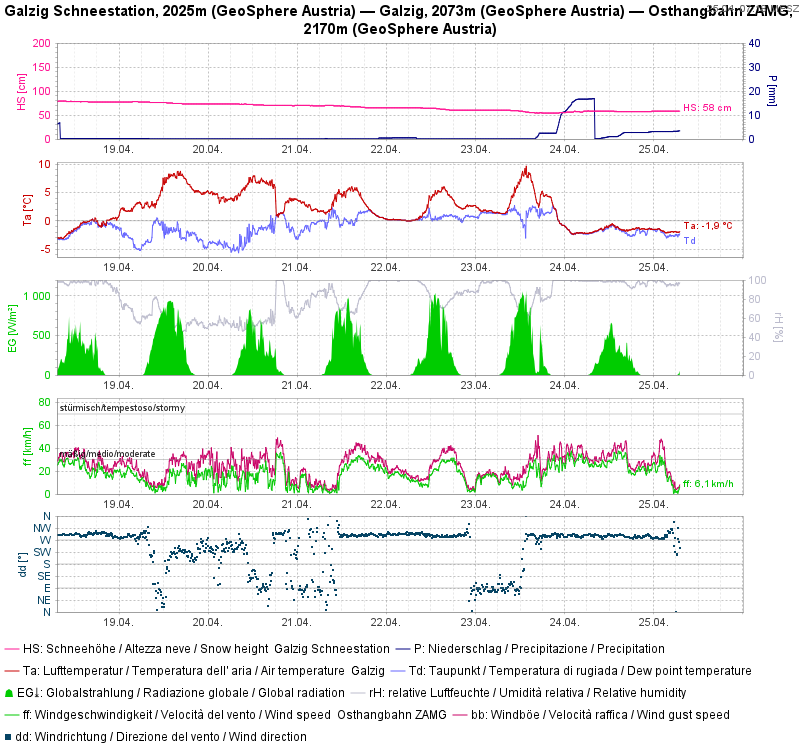
Avalanche danger
Currently, avalanche danger is dependent on altitude. Above approximately 2600m there exists a minor snowdrift problem. Potential weak layers for recently generated snowdrift accumulations occur esp. in a frequently observed, quite marked near-surface layer of graupel. Below approximately 2600m over the next few days, a possible loss of firmness due to the thoroughly wet snowpack is what requires the uppermost attentiveness of backcountry tourers. In regions with fresh fallen snow, small loose snowslides can be expected in rocky terrain.
